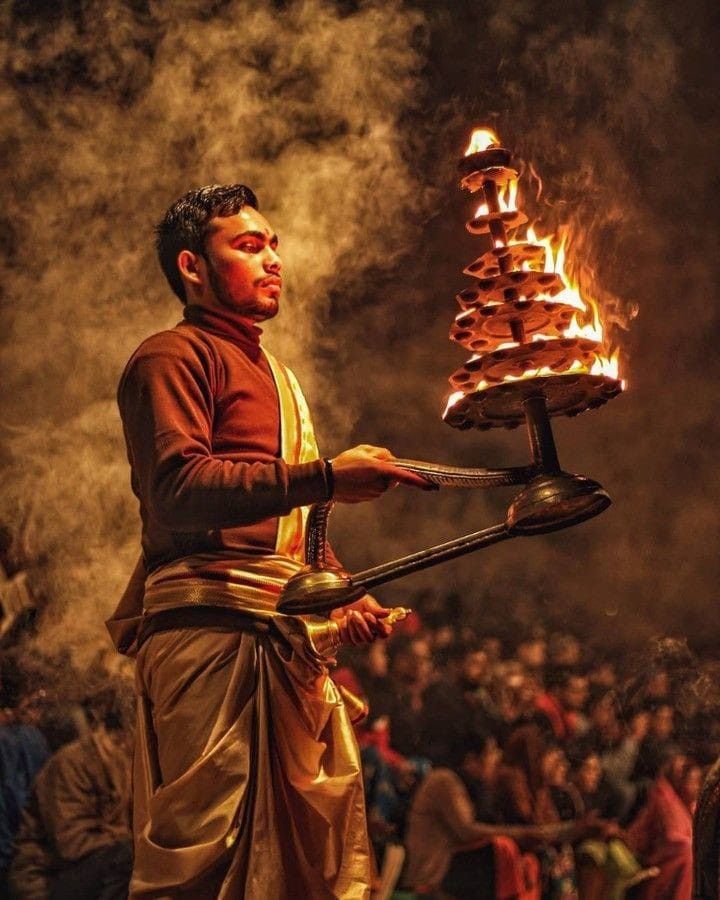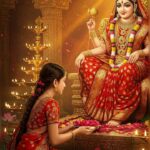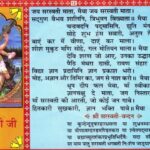8 Powerful Reasons Why Ganga Aarti Brings Peace and Positivity to Life
Introduction: The Divine Essence of Ganga Aarti
The Ganga Aarti is one of the most sacred and mesmerizing rituals in Hinduism, performed in honor of the Goddess Ganga, the personification of the holy river Ganges. Revered as the source of purification, life, and spiritual power, the Ganga holds immense cultural, religious, and ecological significance in India.
- Introduction: The Divine Essence of Ganga Aarti
- The Text and Essence of Ganga Aarti
- History of Ganga Aarti
- Timeline of Ganga Aarti
- Interesting Facts About Ganga Aarti
- Significance of Ganga Aarti
- Observance and Daily Practice
- Wishing With Ganga Aarti
- Importance of Ganga Aarti in Our Life
- Importance of Ganga Aarti in Society
- FAQs About Ganga Aarti
- Conclusion: Daily Life Impact of Ganga Aarti
Aarti, the ceremonial offering of light (usually from lamps or diyas) and chanting, symbolizes gratitude, devotion, and spiritual connection with the divine river. The ritual is performed daily at major ghats in India, especially in Varanasi, Haridwar, and Rishikesh, attracting thousands of devotees and tourists alike.
Ganga Aarti is more than a ritual; it is an experience of peace, devotion, and divine energy that leaves a lasting impact on the mind and soul.
The Text and Essence of Ganga Aarti
A typical Ganga Aarti involves chanting hymns and prayers dedicated to the river Goddess. While variations exist regionally, one of the most popular Aartis begins with:
“Jai Ganga Maiya, Maiya Jai Ganga Devi…
Tera Jala Amar, Sabko Kar De Shuddh…”
Meaning:
“Victory to Mother Ganga, the immortal river goddess. May your holy waters purify everyone and bless us with spiritual wisdom.”
The essence of Ganga Aarti lies in gratitude, purification, and spiritual awakening, celebrating the life-giving energy of the river and the Goddess who protects and nourishes all beings.
History of Ganga Aarti
Vedic Origins: The Ganges has been mentioned in ancient Vedic texts as “Jahnavi” or the daughter of Sage Jahnu, and revered as the sacred river of liberation and purity.
Puranic References: The Bhagavata Purana and Skanda Purana describe Ganga descending from heaven to earth, bringing spiritual blessings and purification.
Medieval Period: Temples and ghats along the Ganges formalized the Aarti ritual, integrating lamps, flowers, and mantras in daily worship.
Colonial and Modern Times: Ganga Aarti became a major spiritual and cultural event, attracting pilgrims and tourists globally.
Global Recognition: Today, it is celebrated internationally as a symbol of spirituality, cultural heritage, and devotion.
Timeline of Ganga Aarti
1500–1000 BCE: Early mentions of Ganga in the Vedas as a sacred river.
400–600 CE: Ganga worship formalized in Puranas and religious texts.
12th–16th Century: Ghats constructed in Varanasi and Haridwar for ritualistic practices.
17th–19th Century: Aarti rituals standardized and popularized in temples.
20th Century: Mass Aarti ceremonies attract national and international attention.
21st Century: Digital streaming and cultural promotions make Ganga Aarti accessible globally.
Interesting Facts About Ganga Aarti
Devotional and Cultural Symbol: Represents the divine energy of the river, worshipped as Mother Ganga.
Ritual of Light: Lamps, camphor, and incense offered during Aarti symbolize dispelling darkness and ignorance.
Spiritual Gathering: Thousands of devotees participate, creating a collective energy of devotion and peace.
Healing Vibrations: The rhythmic chanting and flowing lamps are said to calm the mind, enhance focus, and bring inner peace.
Eco-Spiritual Significance: Ganga Aarti emphasizes respect for nature and highlights the river’s ecological importance.
Regional Variations: While Varanasi, Haridwar, and Rishikesh are famous for Aarti, other ghats and temples across India perform unique versions.
Tourist Attraction: Aarti ceremonies attract global attention, making it a symbol of India’s spiritual tourism.
Significance of Ganga Aarti
Spiritual Purification: Believed to cleanse sins and negative energies, both spiritually and emotionally.
Mental Peace: Provides calmness, stress relief, and emotional balance.
Cultural Preservation: Maintains centuries-old traditions and rituals of river worship.
Moral and Ethical Guidance: Encourages gratitude, humility, and respect for nature.
Community Connection: Collective chanting strengthens bonds among devotees.
Symbol of Life and Energy: Ganga Aarti reminds humans of the river’s vital role in sustaining life.
Observance and Daily Practice
Ghats and Temples: Ganga Aarti is performed daily, usually at sunset, with rituals lasting 30–60 minutes.
Home Rituals: Devotees can perform Aarti at home with a lamp, incense, flowers, and Ganga water.
Special Occasions: Aarti becomes more elaborate during Kartik Purnima, Makar Sankranti, and Ganga Dussehra.
Group Participation: Community Aartis are common, especially in pilgrimage centers, promoting shared devotion.
Meditative Practice: Chanting or listening to Aarti helps focus, meditate, and attain inner peace.
Wishing With Ganga Aarti
Devotees use the Aarti to send blessings and positive wishes:
Festival Wish: “May Maa Ganga bless you with spiritual wisdom, health, and prosperity.”
Daily Life Blessing: “With the holy vibrations of Ganga Aarti, may your life be filled with peace and purity.”
Special Occasions: Aarti can be included in birthdays, anniversaries, or recovery prayers to invoke protection and positivity.
Importance of Ganga Aarti in Our Life
For Students: Improves focus, reduces anxiety, and inspires spiritual learning.
For Professionals: Encourages clarity, mental calm, and ethical decision-making.
For Families: Promotes unity, peace, and shared spiritual experiences.
For Health: Reduces stress, enhances emotional balance, and encourages mindfulness.
For Spiritual Seekers: Acts as a meditative and devotional tool for connecting with divine energy.
Importance of Ganga Aarti in Society
Cultural Identity: Represents India’s spiritual and cultural heritage.
Community Cohesion: Collective Aarti strengthens social bonds and devotion.
Eco-Consciousness: Highlights respect and reverence for natural resources.
Global Spiritual Symbol: Attracts international pilgrims and tourists, sharing India’s rich traditions.
Moral Inspiration: Inspires gratitude, humility, and righteous living.
FAQs About Ganga Aarti
Q1. Who is Ganga Aarti dedicated to?
It is dedicated to Goddess Ganga, the sacred river personified as a divine mother.
Q2. When is the best time for Ganga Aarti?
Typically at sunset, though morning Aartis are also performed in some locations.
Q3. Can anyone perform Ganga Aarti?
Yes, it can be performed by anyone, at home or in temples, with devotion.
Q4. What are the benefits of performing or attending Ganga Aarti?
It provides spiritual purification, mental peace, emotional balance, and strengthens community bonds.
Q5. Are there regional differences in Ganga Aarti?
Yes, Varanasi, Haridwar, Rishikesh, and other regions have unique versions reflecting local culture.
Conclusion: Daily Life Impact of Ganga Aarti
Ganga Aarti is more than a ritual—it is a transformative experience. By participating in Aarti or listening to its chants, devotees can experience spiritual cleansing, emotional peace, and mental clarity. It encourages gratitude, respect for nature, and moral living.
In our busy modern lives, Ganga Aarti serves as a reminder to slow down, connect with spirituality, and draw strength from divine energies. It uplifts individuals, unites communities, and promotes positivity and harmony in society.
Goddess Ganga represents the sacred river in Hindu mythology and is said to be the only living Goddess. Adorned in a chaste white sari and crown, she is found sitting on a crocodile, holding a water lily in her right hand and a lute in the other. Ganga is a Hindu goddess believed to have the power of absolving one’s sins. Goddess Ganga is known as Mandakini in heaven, Bhagirathi on earth and Alakananda in the underworld. Although mentioned in the Rig Veda twice, she attained immense importance in the later Puranic period. According to the puranas, the very touch of Ganga purifies one of all his sins and if a person takes a holy dip in it, he is bestowed with blessings of highest order.
According to a legend, Lord Vishnu was said to be so overwhelmed hearing to a flute recital by Lord Shiva that his feet began to melt. Lord Brahma, in turn, collected this liquefied portion of Vishnu’s feet and produced the goddess Ganga. So, she is also known as Vishnu-Padi or born from Vishnu’s feet. Another legend says that Ganga was brought down to the earth for the salvation of King Sagara’s 60,000 sons, who were burnt to ashes by an angry sage named Kapila. Bhagiratha, a descendant of King Sagara, finally succeeded in pleasing Lord Shiva and Goddess Ganga after a long penance and thus Goddess Ganga descended to the earth as River Ganges. In order to lessen the impact of her flow on earth, it was caught in the matted hair of Lord Shiva.
Goddess Ganga Aarti
Arti ganga maiya, man jai sursari maiya
Bhav-varidhi-uddharini atihi sudradh naiya, man Jai….
Hari pada-padam-prasuta vimal varidhara,
Brahmadeva Bhagirathi shuchi punyagara, man Jai
Shankar-jata-viharini, hanoi trya tapa,
Sagar-putra-gana-tarini harani sakal papai man Jai…
Ganga Ganga jo jana uchcharat mukha son,
Dur desh man sthit bhi turat tarat sukh son, man Jai…
Mrit ki asthi tanik tuv jal dhara pavai,
So jan pavan hokar param dham javai, man Jai
Tav tatvasi taruvar, jal thal char prani
Pakshi-pashu-patang gati pavai nirvani, man Jai
Matu, daya mai kijai dinan par daya
Prabhu pad padma milakar Hari lijai maya, man Jai
🌊 Truly, Ganga Aarti is a timeless source of spiritual light, inner peace, and societal unity, flowing like the sacred river it honors.








